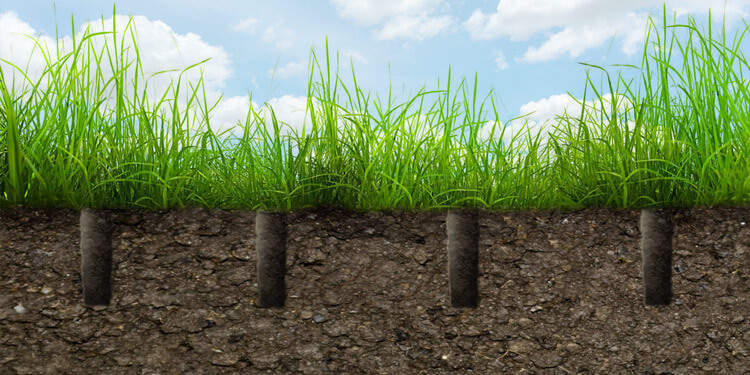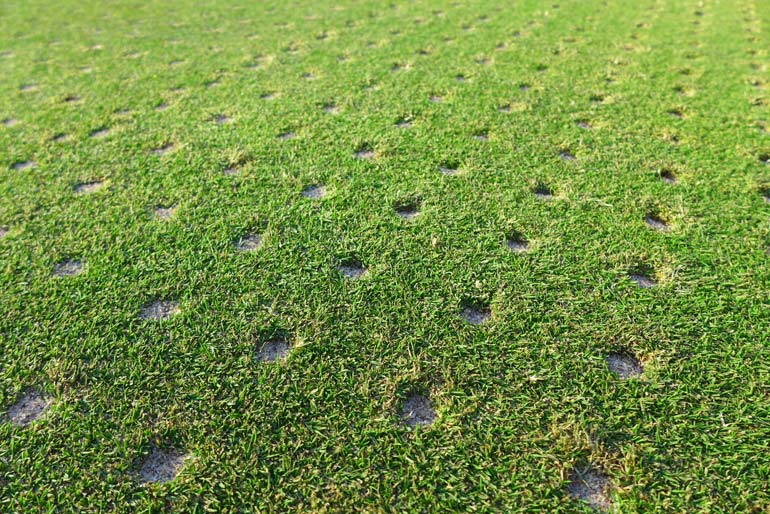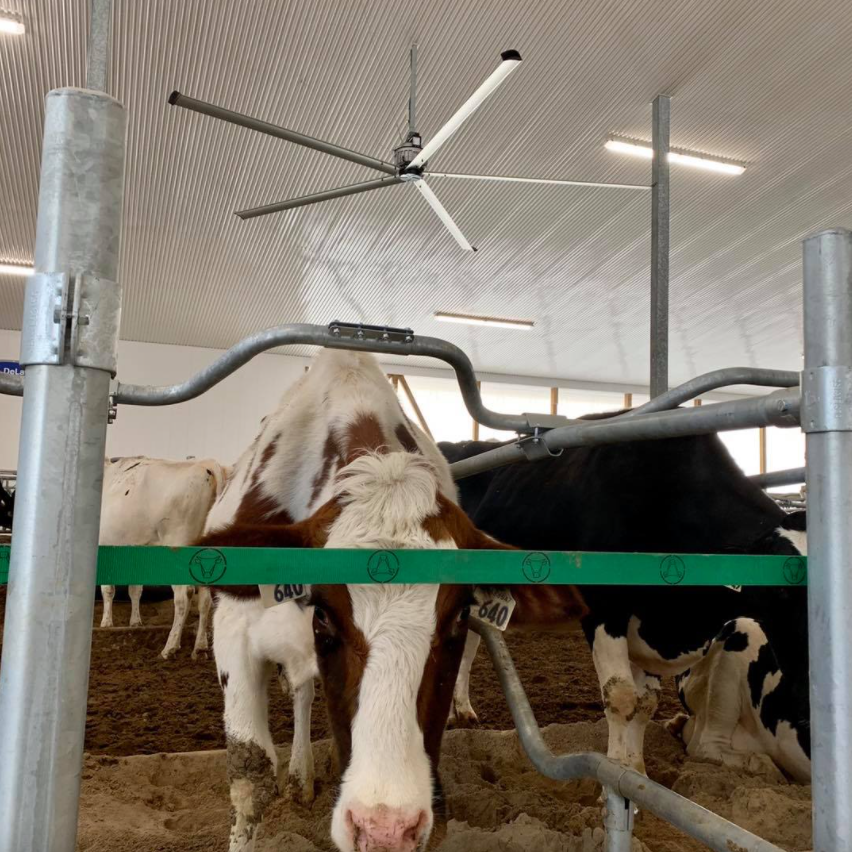The Dos and Don’ts of Lawn Aeration

Your lawn needs much more than water and sunlight to grow properly. At least twice per year, you need to feed your lawn the right kind of fertilizer to put nutrients back into the soil and facilitate proper growth!

You need to mow your lawn religiously, so the blades don’t become long and fragile. And, a task many homeowners fail to fully understand, aeration should be performed at least once a year.
If you are wondering what aeration means and why your lawn needs it, you have come to the right place. Aeration consists of poking holes into your lawn, to loosen the soil and roots. This helps nutrients like fertilizer and water seep deeper into the soil and gives your lawn space to grow. All lawns need aeration eventually, but if your lawn is subject to heavy winter snows or foot traffic (i.e. if you have kids or pets who like to play outside), you definitely need to aerate ASAP.
If you’ve never aerated your lawn — and you are starting to see brown patches and poor growth — it is best to hire a lawn aeration service to assess the damage and take appropriate action the first time around. Still, you should know the ins and outs of aeration, so here’s how to do it properly to prevent additional damage to your lawn.

DO: Prepare Your Lawn for Aeration
As you might expect, driving holes into your lawn can be risky for your lawn’s health, so it’s important that you only aerate when your lawn is ready. Generally, the periods of highest stress to your lawn are the fall and winter; this is when your lawn is preparing to go dormant, so it slows its growth and isn’t prepared to reap the benefits of aeration. You also should avoid aerating during periods of high heat and drought, which also cause your lawn stress.
Instead, you should aerate before or during periods of high growth, which is to say springtime. It is best to aerate after you’ve mowed a handful of times, to give your grass time to wake up and warm up after winter.
Your lawn should be well-watered before you aerate; it’s wise to give your grass at least 1 inch of water two days prior to punching holes. This makes it easier to push your aeration tool of choice into the soil and extract soil cores.

DON’T: Use a Spike Aerator
This is one of the most important no-nos when it comes to lawn aeration, but to understand it you might need some background. There are two types of aeration tools: spike aerators and core aerators.
Spike aerators are exactly like they sound — spikes that punch holes into the soil. They take the form of pitchforks, and you can also buy shoe spikes to walk around your lawn to aerate. Unfortunately, spike aerators typically compound the problem that aeration is supposed to solve. In punching a hole, they compact the soil further around the hole, making it more difficult for grass to grow roots in those areas.
Conversely, core aerators cut a circle in the soil and remove a plug. By making a hole this way, they do not exacerbate compaction problems. Thus, you should only consider investing in a core aerating device.
DO: Consider the Size of Your Lawn
Enormous lawns, like those that make up golf courses, are aerated frequently by a professional service that puts an aerating attachment on a motorized tractor. This is because there is a vast quantity of soil to punch holes in, and the larger, powered machine makes the job more manageable.
If you have a larger lawn, you might also consider investing in a power aerator of some type — perhaps not a full-sized tractor but at least a push machine about the size of your lawn mower. For smaller lawns, manual aeration tools will typically suffice, but you do need to acquire a core aerator; it can’t be said enough that spike aerators are no-go.

DON’T: Rake up the Soil Plugs
After you finish running the aerating tool around your lawn, you might be tempted to rake up all the unsightly little plugs laying around — but don’t. Those plugs will break apart and assimilate back into the soil, and in doing so, they will bring with them nutrients gathered from above-ground. You can sprinkle a layer of compost over your entire lawn to help with this process and give your lawn a growth boost.
Aerating helps your lawn grow, and unfortunately, it can also benefit weeds. To prevent weeds from sprouting up through your aeration holes, you might spread a layer of sand across your lawn when you seed. If you don’t plan to overseed after aerating, you can instead spray your lawn with a pre-emergent weed killer to prevent dormant weed seeds from germinating.
DON’T: Expect Results Right Away
It will take a few days for the plugs to disintegrate, but even then, you shouldn’t expect to see results in your lawn for a few weeks at least. So, after you aerate, you can kick back and relax — or better yet, continue mowing, watering and weeding religiously, so your lawn will have the best shot at looking beautiful all year long.







Leave a Comment